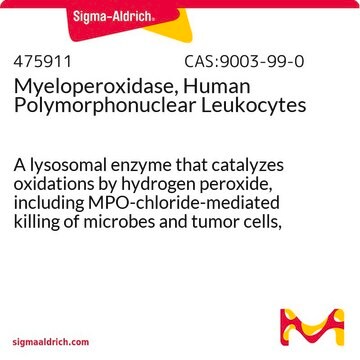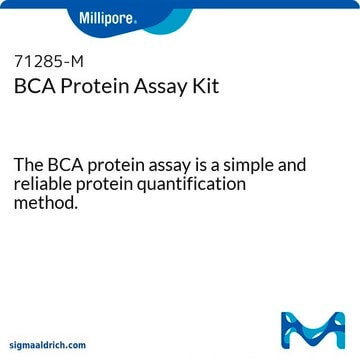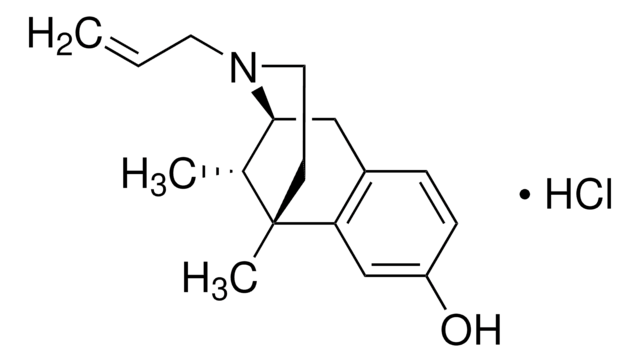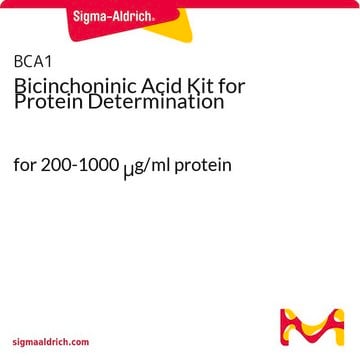The method of preparation is considered proprietary. However, as mentioned in this properties section of the Product Detail Page, this is Azurin from Pseudomonas aeruginosa. See the links below to review a sample Certificate of Analysis and the product data sheet, respectively:
https://www.sigmaaldrich.com/certificates/sapfs/PROD/sap/certificate_pdfs/COFA/Q14/A3672-1MG0000211689.pdf
https://www.sigmaaldrich.com/deepweb/assets/sigmaaldrich/product/documents/306/100/a3672dat.pdf
A3672
Azurin
from Pseudomonas aeruginosa, lyophilized powder
Scegli un formato
Scegli un formato
About This Item
Prodotti consigliati
Origine biologica
Pseudomonas aeruginosa
Livello qualitativo
Stato
lyophilized powder
Composizione
Protein, ≥65% Lowry
Concentrazione
≥65.0% (Lowry)
tecniche
toxicology assay: suitable
Solubilità
water: soluble 1—1.1 mg/mL, clear, blue (light blue to blue)
N° accesso UniProt
Temperatura di conservazione
−20°C
Informazioni sul gene
Pseudomonas aeruginosa ... AZU(878046)
Cerchi prodotti simili? Visita Guida al confronto tra prodotti
Descrizione generale
Applicazioni
Azioni biochim/fisiol
Stato fisico
Codice della classe di stoccaggio
11 - Combustible Solids
Classe di pericolosità dell'acqua (WGK)
WGK 3
Punto d’infiammabilità (°F)
Not applicable
Punto d’infiammabilità (°C)
Not applicable
Dispositivi di protezione individuale
Eyeshields, Gloves, type N95 (US)
Scegli una delle versioni più recenti:
Certificati d'analisi (COA)
Non trovi la versione di tuo interesse?
Se hai bisogno di una versione specifica, puoi cercare il certificato tramite il numero di lotto.
Possiedi già questo prodotto?
I documenti relativi ai prodotti acquistati recentemente sono disponibili nell’Archivio dei documenti.
-
How do i know that this is azurin i mean any confirmatory test or anything else.
1 risposta-
Utile?
-
Filtri attivi
Il team dei nostri ricercatori vanta grande esperienza in tutte le aree della ricerca quali Life Science, scienza dei materiali, sintesi chimica, cromatografia, discipline analitiche, ecc..
Contatta l'Assistenza Tecnica.








